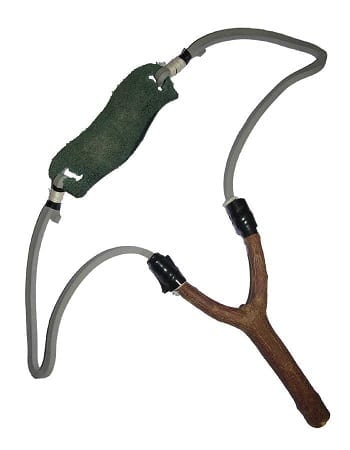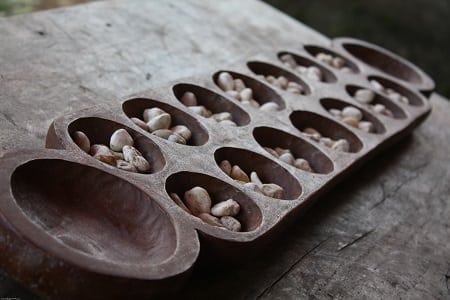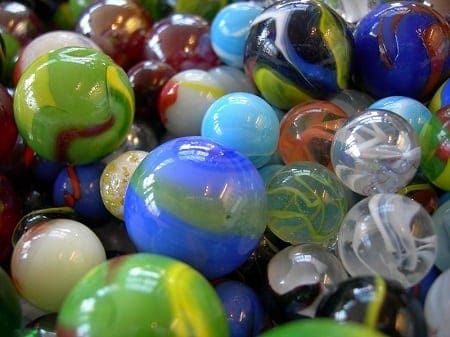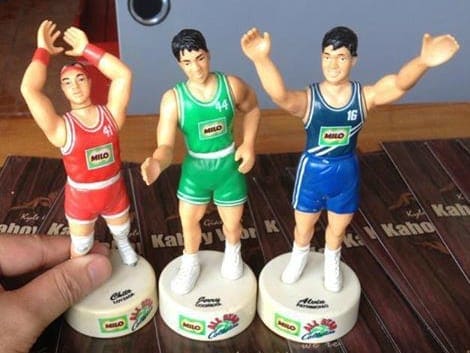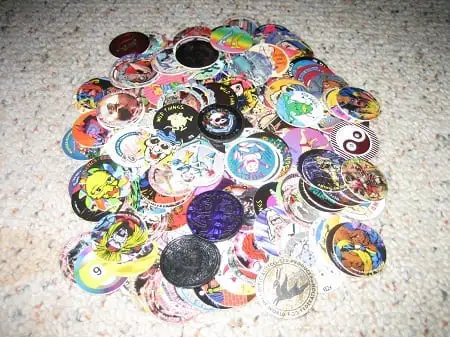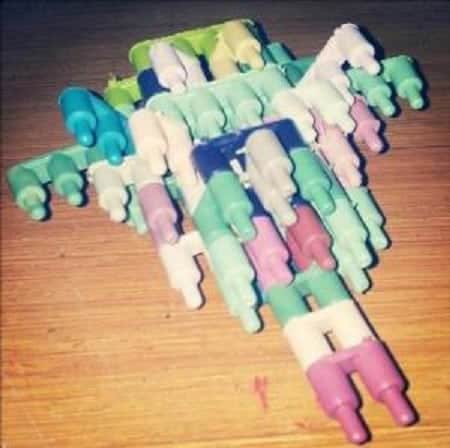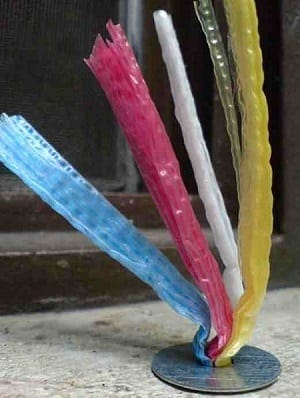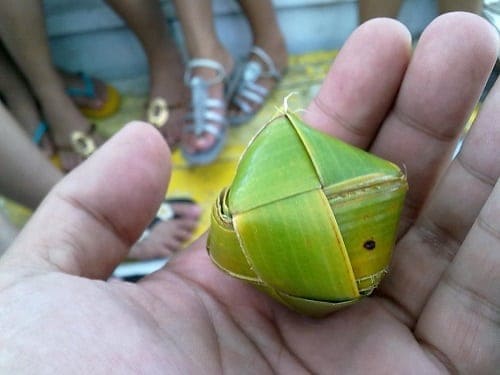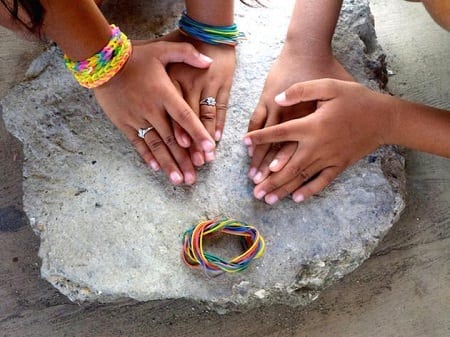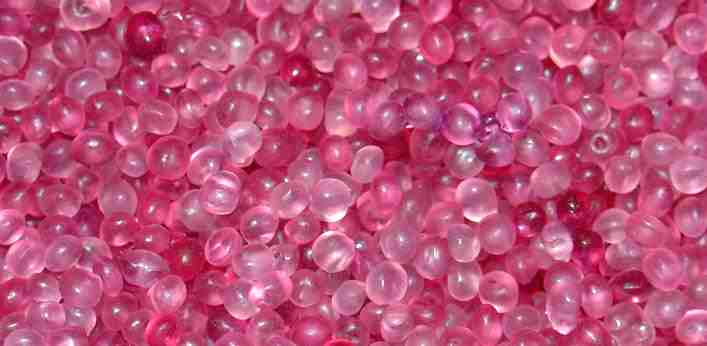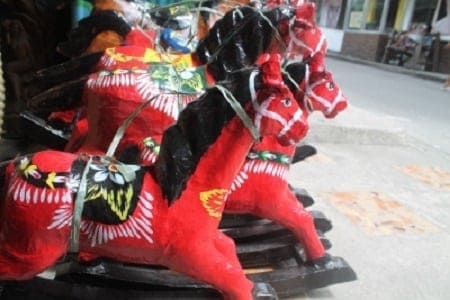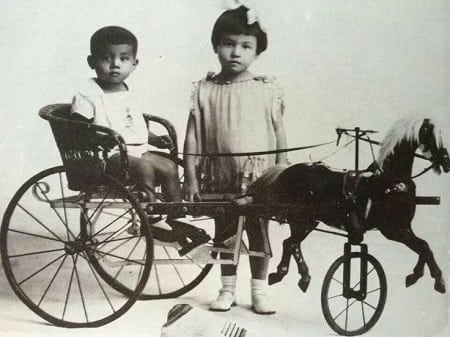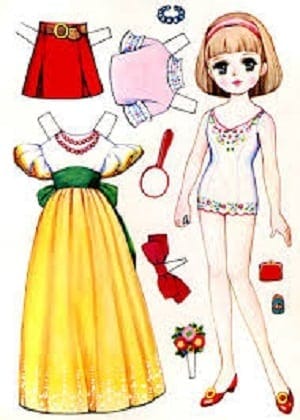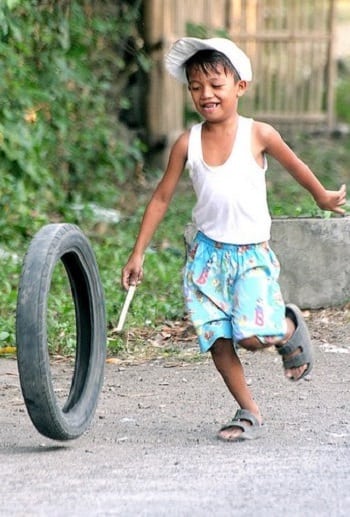20 Classic Filipino Toys That Will Make You Super Nostalgic
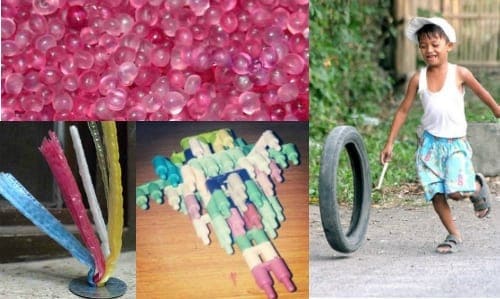
Kids (and adults) today are often too absorbed in playing digital games, so much so that we no longer know or remember how to play with traditional Filipino toys.
Unlike their virtual counterpart, the old-fashioned Filipino toys nurtured our creativity and built a sense of teamwork among our peers. Heck, you can even create your own toys by using what was already available around you. Necessity, after all, is the mother of invention.
Also Read: 7 Traditional Filipino Games You’ve Probably Never Heard Of
Although we now live in a high-tech world, it makes sense to find a perfect balance between allowing our kids to play with their gadgets and introducing them to the toys that have made Filipinos who they are. Here are a few unforgettable toys and games that will make every true Pinoy extremely nostalgic:
1. Tirador
Slingshot is one of the oldest toys in the world, dating as far back as ancient times when it was used both as a weapon and hunting tool. It’s Pinoy version, called tirador, is an improvised toy made of a Y-shaped piece of hardwood (or branch of a tree) and rubber strips made from the inner tube of a car wheel.
A leather pocket attached to the strips is pulled back in order to launch the projectile–usually a stone or a seed. Filipino kids use tirador either to get high-hanging fruits or hunt small animals such as birds.
2. Sungka Board
An indoor Filipino game, sungka is actually a member of the mancala (“count and capture”) family of board games and has its counterpart in different Southeast Asian regions and countries as far as Madagascar.
A sungka board has seven cups for each of the two players–six cups will hold the cowrie shells (stones or fruit seeds can also be used), while the seventh cup will serve as the player’s home base. The goal is to distribute the shells in a counterclockwise fashion, with the player who gathers the most number of shells in his or her home base declared as the winner.
Although considered as a toy by many, the sungka board is also used by some Filipinos to foretell future events. According to an article published in the Indian Journal of History of Science, the sungka board in the Philippines “is occasionally used for popular divination, especially by elders enquiring on whether travel by youths is auspicious on a certain day, or by girls interested in finding out whether and when they will get married.”
3. Holen or Jolen
Another popular toy that traces its roots to ancient civilizations, the marbles come in different sizes and are usually made of glass with melted pigments. Known to Filipino kids as holen or jolen, these toys are played indoors or outdoors and encourage the players to get down and dirty.
Different variations of the game exist, the most popular of which require a player to flick a marble and hit a group of marble inside a circle. Those that went outside the circle automatically become part of the winning player’s collection.
4. Saranggola
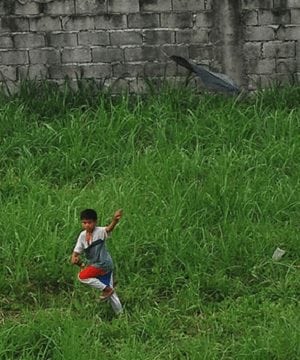
Saranggola, or kite in English, is another favorite outdoor toy of Filipinos. Although the kite is not an original Filipino invention, the saranggola from our childhood was memorable because it was a product of ingenuity.
Regular saranggola is usually made of barbeque sticks and plastic bags, with the Manila hemp twine serving as its tail. Saranggola is also known by its other names like boka-boka (smaller and usually made of paper), guryon, tsapi-tsapi, and portagis.
5. Vintage Basketball-Themed Action Figures
These limited-edition sharpeners, featuring some of the most popular Filipino basketball players of the ’90s, were given as freebies for every purchase of a popular energy drink.
The sharpener-cum-action figures paid tribute to the career highs of such influential basketball athletes such as Benjie Paras (not in the picture), Jerry Codiñera (green), Chito Loyzaga (red), and Alvin Patrimonio (blue).
Also Read: Top 10 Favorite Snacks that Bring Back Our Childhood
This set of vintage toys also evokes memories of MILO caravan, during which the popular brand visited our respective schools and treated us with a glass of delicious chocolate energy drink.
6. Trumpo
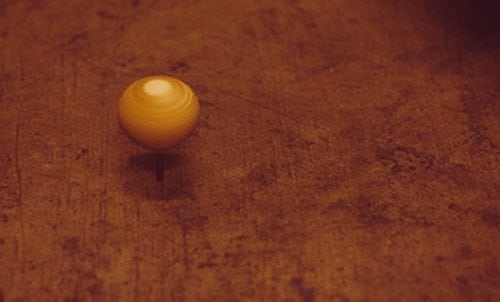
The trumpo or Philippine tops is a conical toy of ancient origins that had fascinated Pinoy kids long before the advent of Beyblades. It is similar to the American top but much smaller. Although you could buy ready-made tops, most kids back then preferred to have an improvised trumpo, usually carved from hardwood or guava branches.
The typical trumpo has an iron-nail pivot and is wrapped with nylon lines attached to a stopper held between the player’s fingers. It also comes in various shapes and designs–from the wooden Ifugao top “with a groove at its waist, its pivot the extension of its body” to the Maranao version in Mindanao that has “silver or copper bands incised with decorations.”
Trumpo is ideally played by two or more people. Kids would often throw their tops on a flat surface and let them spin and outperform each other. The player with the last trumpo standing becomes the winner.
7. Teks
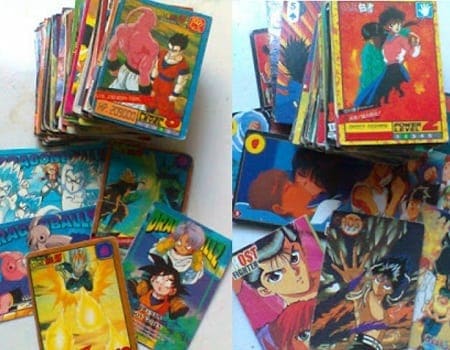
Popularly known to Filipino kids as “teks,” these cards are similar to NBA collectible cards, except the former was commonly played in a betting game wherein the winning player takes home the cards.
READ: 13 Nostalgic Pinoy Kid-Oriented TV Shows That Defined Our Childhood
Printed on cardboard, the “teks” usually depicted TV shows or movies that were popular at the time they were released (for ’90s kids, think Mari Mar, Sailor Moon, Ghost Fighter, Dragon Ball Z, BT X, and Zenki among others.)
Back in the day, you could trade these cards with your childhood barkada, or you could join a game where the players would flip the cards in the air and bet which side will come up. Before or after the game, players would usually count their respective cards while uttering “I-sa! Dala-wa!, Tat-lo! A-pat! Li-ma!” and so forth.
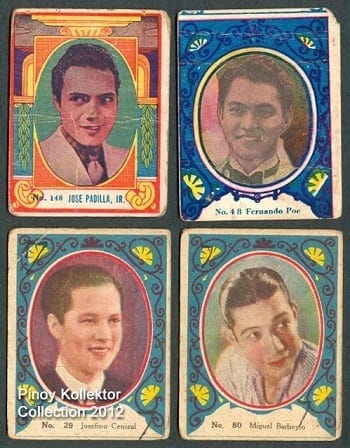
Unknown to most younger generations, however, the Pinoy teks already existed as early as the 1930s. But instead of characters from animated TV shows, this early edition of trading cards featured popular pre-war Filipino movie stars like Fernando Poe Sr., Rogelio dela Rosa, Tia Duran, Mary Walter, Rosa del Rosario, and Leopoldo Salcedo. The Filipino teks then slowly evolved, with its size getting smaller and smaller as time went by.
8. Pogs
Pogs is the circular version of “teks.” School-age children from the late ’80s and early ’90s grew their pogs collection also by playing with their peers. The game requires getting the same number of pogs from each player and forming a stack. After a few throwing and slamming, each winning player will get their share of the pogs that land face up.
The name “pogs” is believed to have originated from a brand of juice called POG (short for passion fruit, orange, and guava), the bottle caps of which were first used to play the earlier version of the game.
The gameplay, on the other hand, is much older than most people think; pogs is said to have evolved from the old Japanese game of Menko in which the players flip their opponents’ cards that were made from ceramics, clay, or wood.
9. This LEGO Knockoff (a.k.a. Poor Man’s LEGO)
Although it pales in comparison with the original LEGO in terms of quality and design, this knockoff provided many not-so-privileged kids with enough tools to explore their creativity.
Usually sold at sari-sari stores near public schools, these so-called “Pinoy LEGO” gave kids a chance to create their own makeshift robots, airplanes, and skyscrapers, just to name a few.
10. Sipa
Made of a small metal washer and colorful plastic straws serving as its tail, this shuttlecock-like toy is used in sipa, a game that had been the country’s national sport until it was replaced by Arnis in 2009.
Sipa, which shares similarities with sepak takraw and China’s jianzi, requires balance and agility. No wonder why kids who played it back then were physically fit and had awesome kicking styles to boot.
11. Coconut Leaf Balls
Coconut leaf toy is to the Philippines as origami is to Japan. Filipino kids who grew up in farms or mountainous provinces took delight in seeing their parents or grandparents as they transformed coconut leaves into toys in the shape of balls or animals.
Related Article: 10 Amazing Facts You Probably Didn’t Know About Cebu
Take note that this coconut leaf ball is similar but quite different from the diamond-shaped or heart-shaped woven coconut palm primarily used by Cebuanos to cook the pusò, also known as hanging or palm wrapped rice.
12. Yo-yo
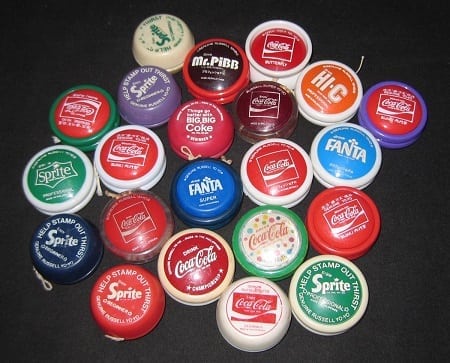
Although its rudiments already existed in ancient Greek and Chinese civilizations, the yoyo only entered the international toy market in the 1930s with the establishment of the Duncan Yoyo Company. An American named H.B. Preston, founder of the company reportedly bought the rights to the toy from its original inventor, a Filipino houseboy named Pedro Flores.
Also Read: 5 Coolest Pinoy Inventions You Haven’t Heard Of
In the ’70s and ’80s, the Coca-Cola Company in the Philippines gave away limited-edition Russell yoyos to whosoever finds a “FREE Yoyo” mark under the bottle cap. These yoyos, now a collector’s item, was made in the Philippines and distributed worldwide. And so started the “yoyo craze” in Manila, during which noontime shows such as Student Canteen aired exhibition contests to further promote the toys.
13. Vintage “Jollibee Kiddie Meal” Toys
One of the most successful Filipino fast food chains in history, Jollibee, just like its competitors, launched several promotional toys in the past.
READ: 10 Interesting Facts You Didn’t Know About Jollibee
The most memorable, of course, were those first few toys released during the company’s early years. Examples of these were the Jollibee kiddie band and the kiddie train, both of which featured the original mascots of the company, namely: Popo (representing french fries); Hetty (spaghetti); Mr. Yum (burgers); Champ the boxer (premium hamburger); Chickee (fried chicken a.k.a. Chickenjoy); and Mico and Lady Moo (for milkshakes).
14. Rubber Band
The rubber band is every Filipino kid’s all-purpose toy: it can be used to play a competitive game called dampa with your friends; or as a weapon to hit the bully or the bully’s victim. You can also tie several rubber bands together to form a makeshift toy long enough to be used for the Chinese Garter game.
15. The Pinoy ‘Plastic Balloon.’
Notwithstanding the fact that it smells like paint thinner, the plastic balloon became the addictive Filipino toy of the ’90s. To play with it, you first squeeze the tube to get a small portion of the resin-like substance which you will then roll to form a ball. Put the substance at the tip of the straw and slowly blow air until a balloon is formed.
Also Read: 14 Beloved Pinoy Products That Are No Longer Available
For starters, the art of forming the perfect plastic balloon requires some skills–and you can master them through practice. And unlike ordinary balloons, you can easily repair small holes in a plastic balloon by using your mouth to blow air and eventually seal the said hole.
16. Aroma Beads (a.k.a. “Kisses”)
Popularly known as “kisses,” these aroma beads aren’t actually toys, to begin with. However, it became a source of amusement for ’90s kids, so much so that an urban legend was born from this harmless air freshener. Youngsters who bought the story went as far as putting the “kisses” in wet cotton inside a matchbox, believing that doing so would get these “kisses” pregnant and eventually multiply itself almost magically.
Sadly, it was indeed a mere urban legend. Aroma beads are super absorbent, up to 30% to 40% fragrance oil. Once it absorbs a liquid, it tends to increase in size and therefore creates an illusion that it somehow multiplies. And so started the story that fooled us all.
17. Filipino Toy Horse
The rocking horse, which originated in 19th-century Europe, and its other variations also made its way to the local toy market. Toy horses in the Philippines are either imported from other countries or locally-made in the famous wood carving town of Paete, Laguna.
Also known as taka, the paper mache toys like the red rocking horse are now being exported to other countries such as Germany due to Paeteños’ amazing craftsmanship. The paper mache industry in Paete has come a long way since the first ever taka was reportedly made by Maria Bague in the 1920s.
18. Paper Dolls
A paper doll satisfied young Filipina girls’ fantasy of having every beautiful clothing they like. Playing with their paper dolls, which came with fascinating add-ons such as food and different items from a beauty kit, had nurtured these young girls’ sense of style in a way. Particularly memorable were those that featured popular cartoon characters such as Sailor Moon and Princess Sarah.
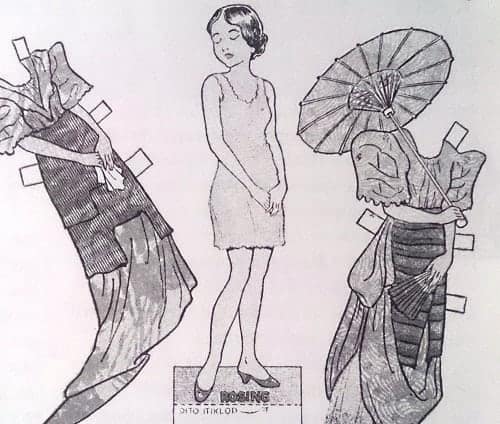
The art of making paper dolls traces its roots to ancient civilizations where paper was first used. The first manufactured paper doll is London’s Litte Fanny, produced by S&J Fuller in 1810. The Philippines, on the other hand, once had a paper doll that perfectly represented our country’s history and culture.
Nicknamed “Rosing,” this Filipina paper doll appeared in the 1932 edition of Liwayway Magazine. Young girls would excitedly cut out this interesting character from the magazine as well as other items that came with her, including food and other accessories.
19. Palayok-palayukan (Mini clay pots and pans)
Considered as a traditional Filipino cooking ware, the earthen pot or palayok has a miniature version usually sold during town fiestas. These toy clay pots and pans, known as palayok-palayukan, are usually given as gifts to young girls who would play bahay-bahayan and lutu-lutuan in their own backyard or garden.
20. Old Tire/Tyre
More often than not, it would only take old and unused items to fascinate children back in the days. Such is the case with old motorcycle tires which Filipino kids would roll with a hand or a stick to win a competitive racing game popularly known as kariling.
The game is usually held in an open space such as streets or basketball courts, and best enjoyed if you do it with as many friends as possible. Each player should do their best to keep their tires rolling. The first kid to reach the finish line is declared as the winner.
References
Baldemor, M. Paete’s Taka. Artes De Las Filipinas. Retrieved 21 August 2015, from http://goo.gl/YTQyIJ
de Las Casas, D., & Gagatiga, Z. (2011). Tales from the 7,000 Isles: Filipino Folk Stories: Filipino Folk Stories (p. 133). ABC-CLIO.
Erbland, K. (2014). The Weird History of Pogs. Mental Floss. Retrieved 21 August 2015, from http://goo.gl/S0cYzZ
Eslit, N. (2015). Bringing back Filipino games. Wall Street International. Retrieved 21 August 2015, from http://goo.gl/Fmaf7X
Filipino Heritage: The American colonial period (1900-1941). (1978) (p. 2355). Manila.
Johnson, J. (2005). History of Paper Dolls. The Original Paper Doll Artists Guild. Retrieved 21 August 2015, from http://goo.gl/yuRuDy
Manansala, P. (1995). Sungka Mathematics of the Philippines. Indian Journal Of History Of Science,30(1), 13 – 29.
Mercado, M. (1978). Games Filipino Children Play. Philippine Appliance Corporation.
Ocampo, A. (2010). Looking Back 2: Dirty Dancing (pp. 66-68). Mandaluyong City: Anvil Publishing, Inc.
Pinoy Kollektor,. (2012). 1930s Philippine MOVIE STARS on TEKS Cards. Retrieved 21 August 2015, from http://goo.gl/4rv2uG
Sta. Maria, F. (2006). The Governor-General’s Kitchen: Philippine Culinary Vignettes and Period Recipes 1521-1935 (p. 300). Mandaluyong City: Anvil Publishing, Inc.
Vorpal, J. (2014). 10 Summer Toys Only Pinoy Kids from the ’80s can Relate to. Smart Parenting. Retrieved 20 August 2015, from http://goo.gl/SjGJ1R
FilipiKnow
FilipiKnow strives to ensure each article published on this website is as accurate and reliable as possible. We invite you, our reader, to take part in our mission to provide free, high-quality information for every Juan. If you think this article needs improvement, or if you have suggestions on how we can better achieve our goals, let us know by sending a message to admin at filipiknow dot net
Copyright Notice
All materials contained on this site are protected by the Republic of the Philippines copyright law and may not be reproduced, distributed, transmitted, displayed, published, or broadcast without the prior written permission of filipiknow.net or in the case of third party materials, the owner of that content. You may not alter or remove any trademark, copyright, or other notice from copies of the content. Be warned that we have already reported and helped terminate several websites and YouTube channels for blatantly stealing our content. If you wish to use filipiknow.net content for commercial purposes, such as for content syndication, etc., please contact us at legal(at)filipiknow(dot)net
